Get PeakVisor App
Sign In
Search by GPS coordinates
- Latitude
- ° ' ''
- Longitude
- ° ' ''
- Units of Length

Yes
Cancel
Share ×

Scan the QR code and open PeakVisor on your phone
❤ Wishlist ×
Choose
Delete
Croatia’s Nature Park Lastovsko Otočje offers its visitors forests, wildlife, and luxury. Yachting and sailing are popular activities here; you will surely see white sails around the island. In addition to hiking, the best way to explore the island is by boat. The park is truly a gem of the sea, surrounded by crystal-clear waters and vibrant coral reefs. There are 30 named peaks in Park Prirode Lastovsko Otočje, with Hum (417 m/ 1,368 ft) being the highest and most prominent.
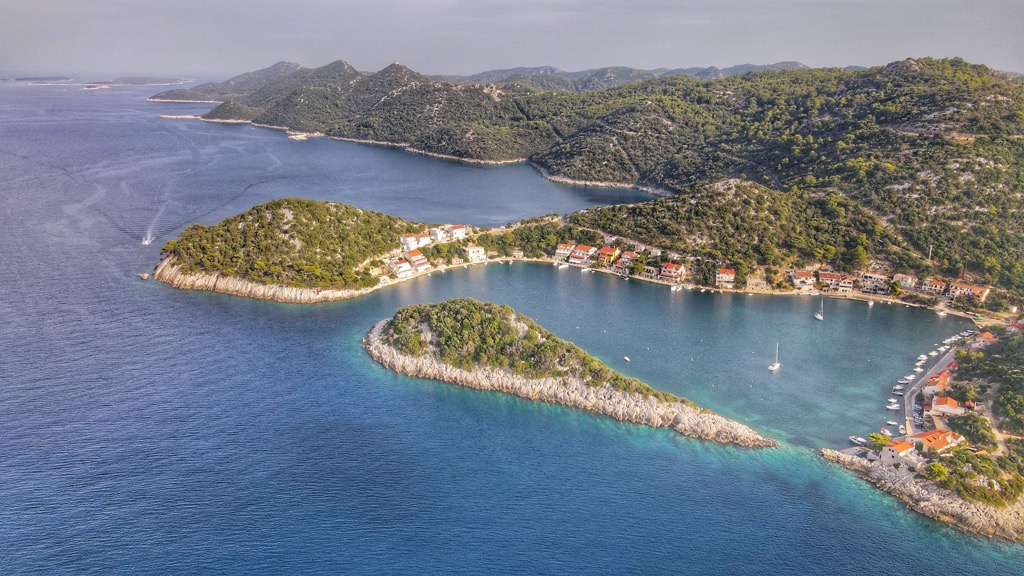
Situated in the Croatian part of the Adriatic Sea, the Lastovo islands lie 14 km (8.6 mi) south of the island of Korčula. The archipelago is in Croatia’s Dalmatia region. It forms part of the outer group of southern Dalmatian islands, encompassing the southernmost inhabited Croatian island of Lastovo and neighboring islands such as Lastovnjaci, Vrhovnjaci, and Sušac.
The surface area of the Lastovo archipelago is 196 sq. km (121 sq. mi), with 53 km (33 mi) on land and 143 km (88 mi) in the sea. It falls under the municipality of Lastovo, the largest island and town, and is in Dubrovnik-Neretva County. The area has five settlements: Lastovo, Zaklopatica, Skrivena Luka, Uble, and Pasadur.
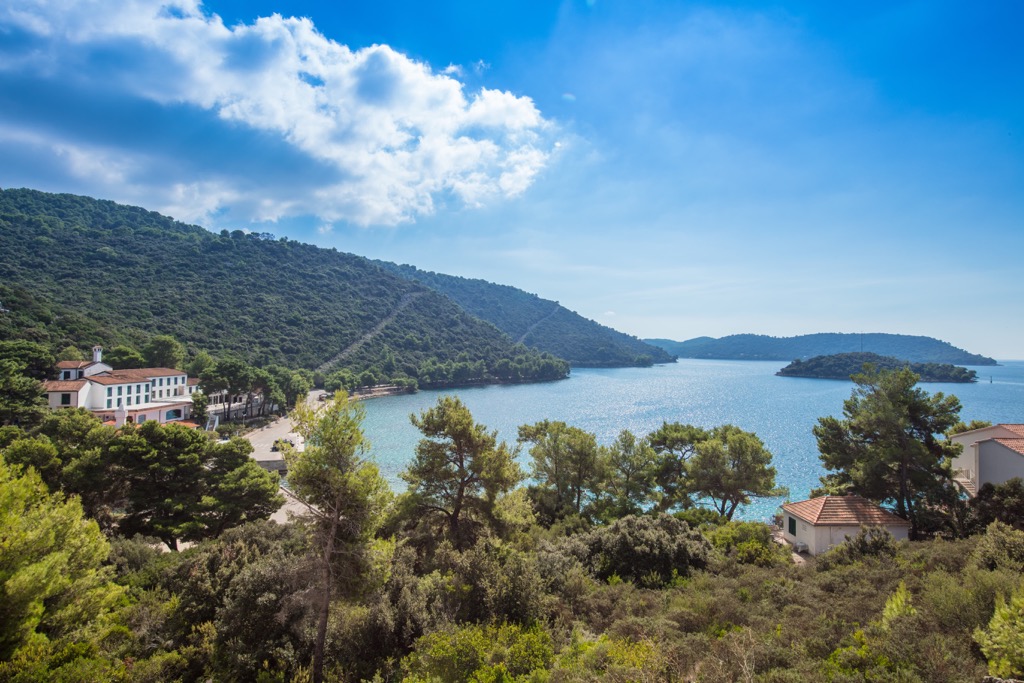
The Croatian government established the Lastovo archipelago as a nature park on September 29, 2006. The area became protected due to its enchanting beauty, dense forests, and fertile fields enriched with ponds, steep coastal cliffs, and underwater caves. Its name in Croatian is Lastovsko otočje Park Prirode, translated as Lastovo Archipelago Nature Park.
The Lastovo Islands Nature Park includes 46 islands, islets, rocks, and reefs, with the largest ones being Lastovo and Sušac. The Sušac, Tajan, Glavat, and Struga lighthouses demarcate the park boundary.
Lastovo and its surrounding islands emerged from the sea bed around 150 million years ago. Over millions of years, the remains of marine organisms, such as skeletons and shells, accumulated on the sea bottom, eventually forming the islands. These Jurassic and Cretaceous sediments account for the dolomite and limestone composition of Lastovo's soil and numerous caves, sinkholes, and fields. On both sides of the archipelago, the sea depth significantly increases, especially in the south, where the sea bottom reaches a depth of 1,350 m (4,429 ft).
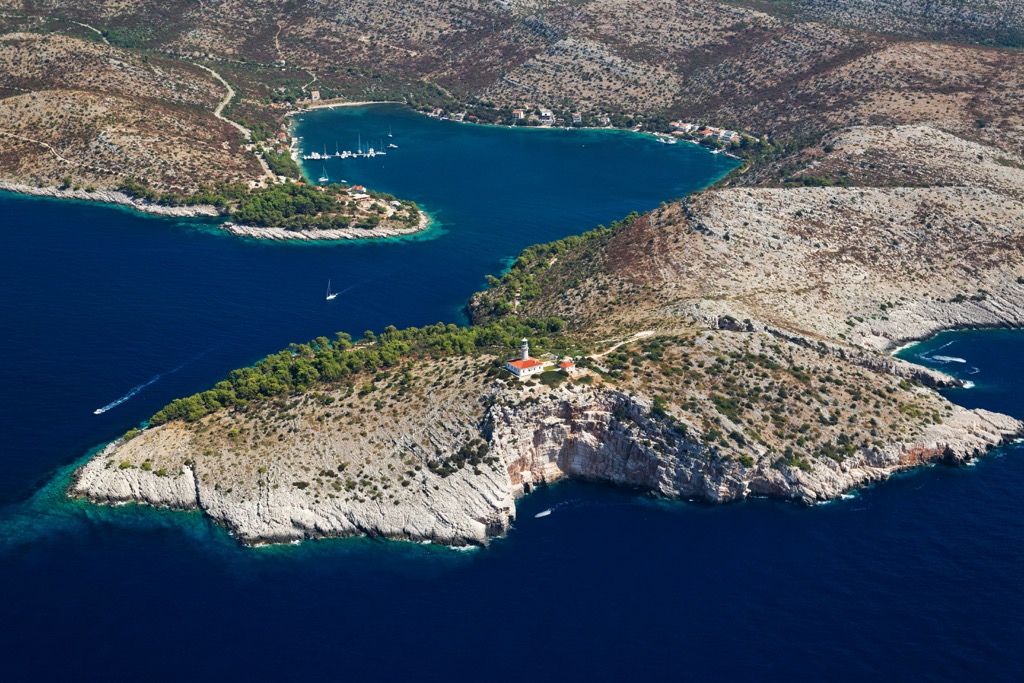
Until the most recent ice age, approximately thirteen thousand years ago, Lastovo was connected to the mainland. However, as the Adriatic Sea expanded due to ice melting, Lastovo became entirely separated by the sea.
The coastline of Lastovo is challenging to access and not particularly hospitable. On the eastern side, there are two groups of islands and islets: Lastovnjaci, located closer to the main island, and Vrhovnjaci, situated a bit farther away. The inner part of the island has numerous caves formed by the seepage of seawater and rainwater through the porous limestone.
The most famous cave within the park is Rača, in the southeast. It has been protected as a geomorphological monument and archaeological site since 1965. Another notable cave is Medjedina, which was once the habitat of the Mediterranean monk seal and is now known for its large bat populations.
The highest peak on the island, Hum (417 m/ 1,368 ft), naturally offers the best viewpoint. The diverse landscape features rolling hills, deep bays, meadows, and an endless sea view. Local meadows include Vinopolje, Lokavje, and Prgovo.
The unique vegetation on the island of Lastovo and its surrounding archipelago is influenced by factors like its remote location, ample sunshine, night humidity, and unique soil. Due to the porous limestone, freshwater resources are precious on the islands, and locals obtain potable water by desalinating brackish water.
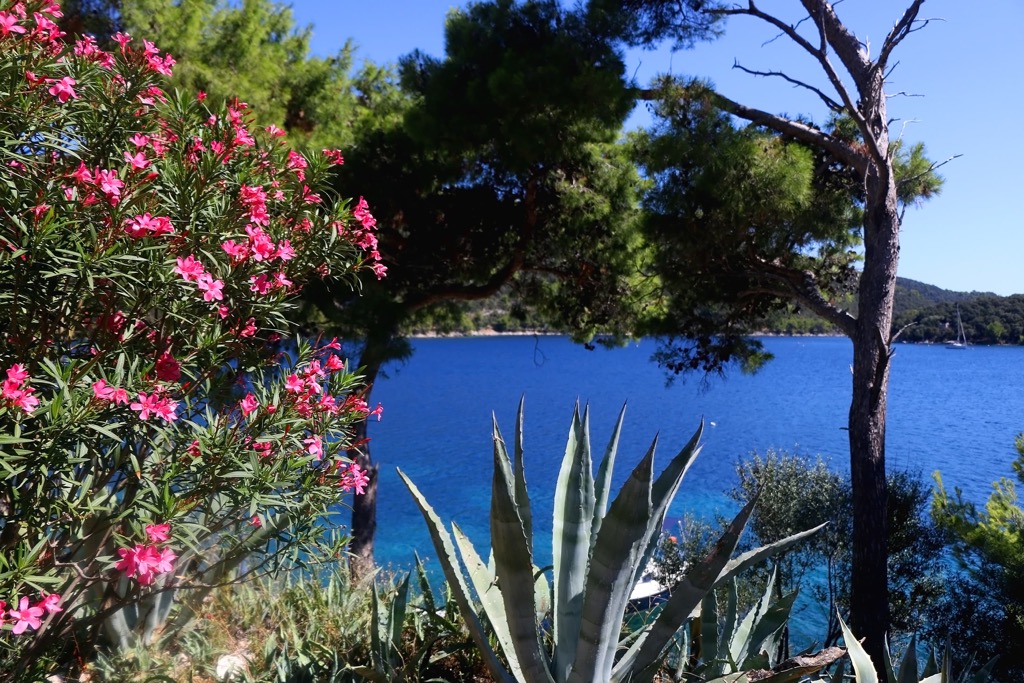
The region boasts over 810 recognized flora and fauna species. Approximately 70% of the island area is covered in forests, making Lastovo the woodiest Croatian island after Mljet. The forest cover consists mainly of small, stunted trees, with notable species like crnika (Quercus ilex) and Aleppo pine (Pinus halepensis). The climate also favors medicinal herbs like sage, mint, yarrow, rosemary, lavender, fennel, and chamomile. Olives are the most commonly cultivated plant.
One hundred and seventy-five vertebrate species have been identified in the park. Lastovo's caves serve as habitats for bats, including three endangered species: the Mediterranean horseshoe bat, the greater horseshoe bat, and Geoffroy's bat.
The Lastovo-Palagruža-Pelješac corridor is a crucial route for migratory birds, including raptors, cranes, and rare species like Eleonora's falcon. Snakes and other reptiles are scarce on Lastovo, but microfauna thrives, including insects, snails, and spiders.
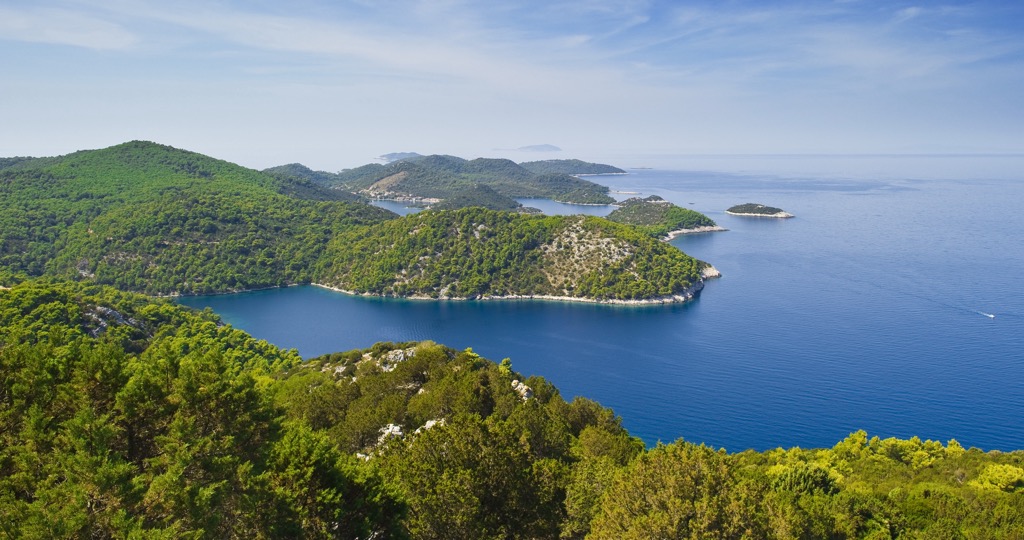
The underwater world of the Lastovo archipelago is teeming with marine flora, boasting 248 recorded species. Photophilic algae cover the rocky seabed, while the shallow coastal areas are adorned with the endangered and protected Posidonia oceanica, which serves as an essential nursery and shelter for marine species.
The diverse zooplankton population in the Lastovo archipelago supports a rich underwater ecosystem with corals, sponges, mollusks, Bryozoa, echinoderms, crabs, and numerous other species. Three hundred and thirty invertebrate species have been documented, including 20 on the endangered species list. Corals include gold coral, red coral, and Hvar coral. Divers are attracted to the clear waters, high density of corals, and abundant sea life.
The Lastovo waters harbor fish species like the black scorpionfish, red scorpionfish, dusky grouper, dentex, black seabream, striped red mullet, forkbeard, East Atlantic peacock wrasse, Muraena, European conger, tuna, greater amberjack, and swordfish. They also support various dolphin species, including the short-beaked common dolphin, common bottlenose dolphin, Risso's dolphin, and sea turtles such as the loggerhead sea turtle and the green sea turtle.
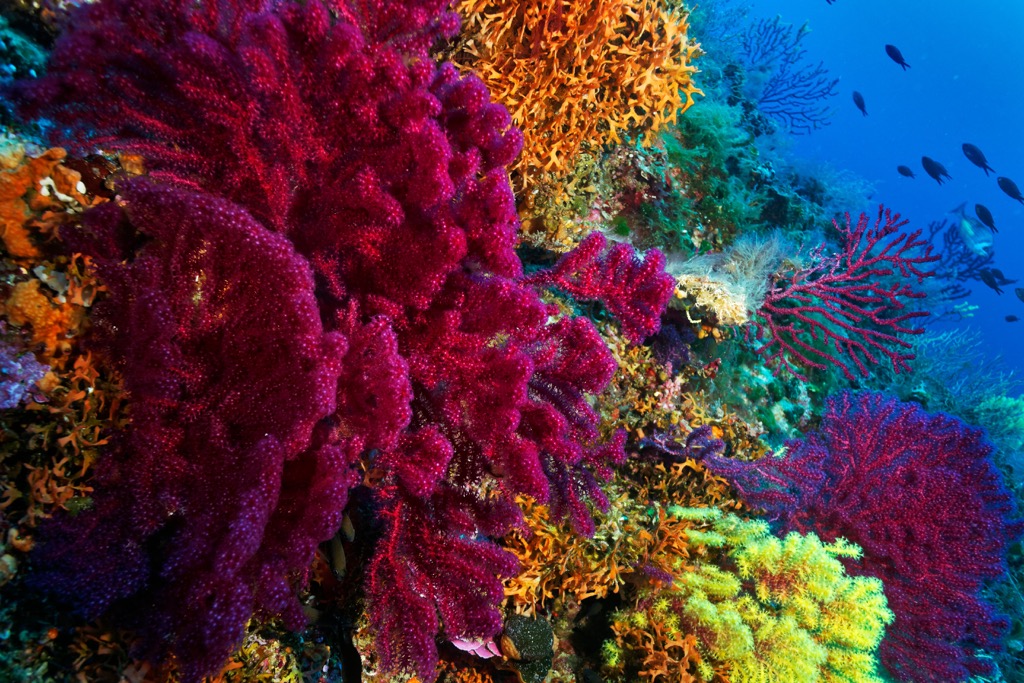
The Lastovo archipelago has been recognized by the WWF as one of the Mediterranean's ten biodiversity hotspots, thanks to its diverse marine habitats and taxa.
Despite the challenges of living on a remote island, the people of Lastovo cherish their customs and appreciate their heritage. Locals of the Lastovo islands demonstrate that harmonious coexistence between nature and humans is achievable through heightened ecological awareness. The island has changed hands several times throughout its history, from Greek and Roman rule to the Dubrovnik Republic. It even had its own Statute in 1310, reflecting its legal and cultural development.
During WWI, Lastovo experienced occupation by Austro-Hungarian, French, and Italian forces. French aircraft bombed the island, and French and Italian troops fought on its shores. Soon after, it became part of the newly-formed state of Yugoslavia. Today, it is part of Croatia.
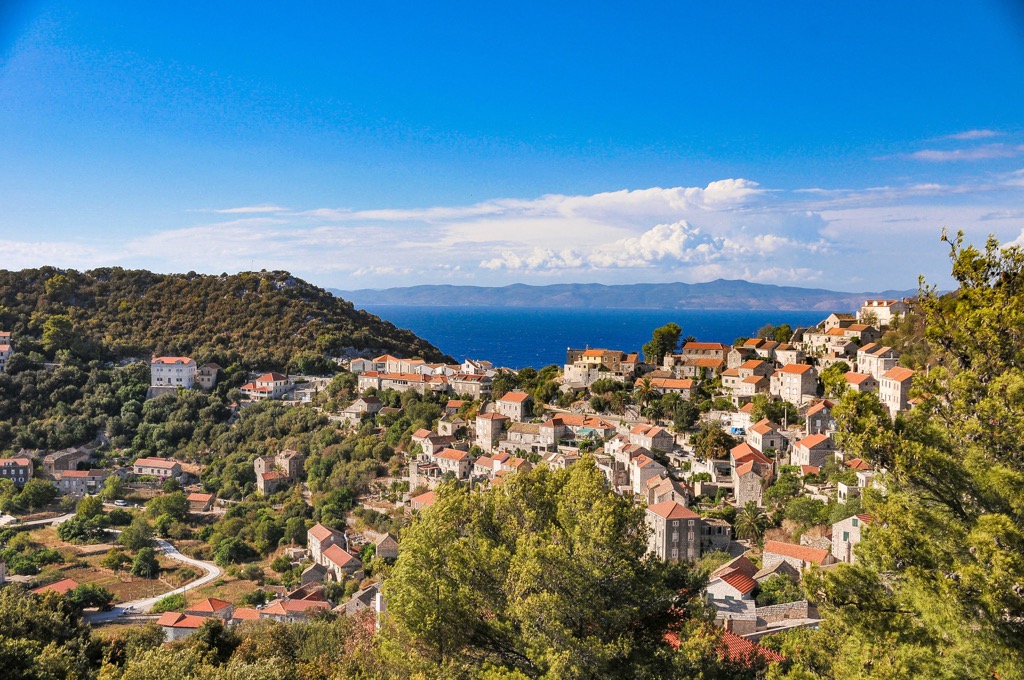
Lastovo has a unique architectural style from the fifteenth and sixteenth centuries when the tradition of eccentric chimneys started. Owners decorate their chimneys, known as fumari, in different colors, motifs, and sizes. The goal is to have the most original fumari in your village or town. The area is also home to 21 protected churches, including one from the sixth century, prehistoric archaeological sites, and Roman remains.
Lastovo Carnival, a part of Croatia's intangible cultural heritage, commemorates the Moorish siege of the island of Korčula and is performed according to strict rules. The traditions date back to the fifteenth century when, according to legend, the Lastovo locals were attacked by the Moors. As the Moorish navy descended upon Lastovo, a storm took their ships. The Lastovo people burned their messengers and celebrated all night. The tradition of carnival remains strong.
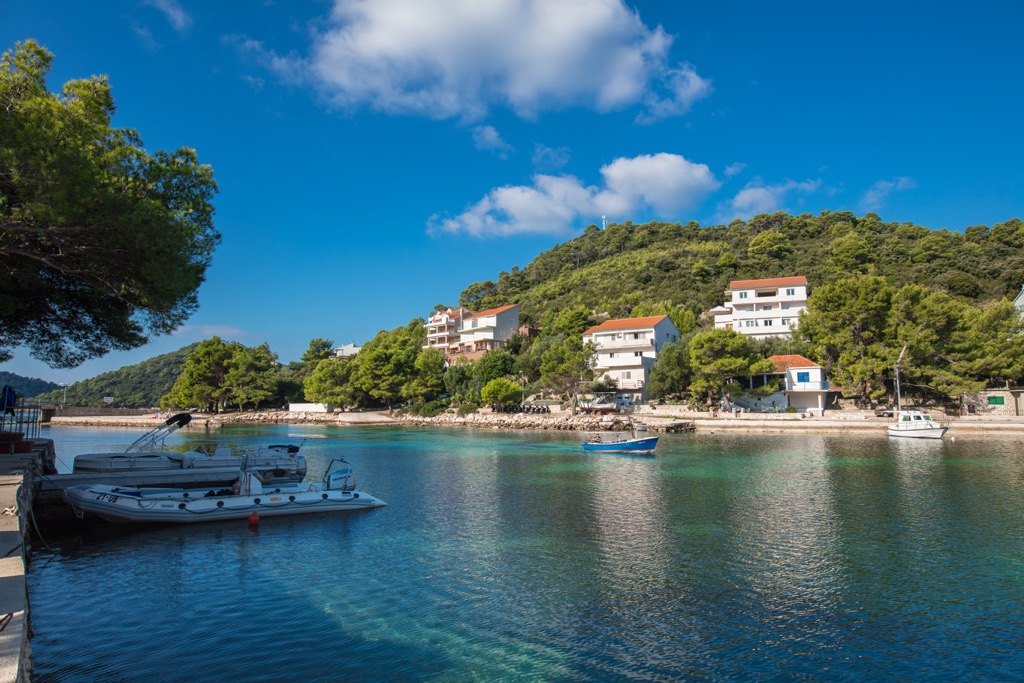
You can reach Pasadur along this 15 km (9 mi) trail. This 4-hour trail is ideal for hikers seeking solitude, as encountering fellow explorers is unlikely. Once on this hike, you will traverse the enchanting Lastovo Island's northern side, starting from Zabarje Bay and ending at Pasadur. Along the way, you'll pass through the town of Lastovo, where notable attractions include the St. Joseph Church.
Start from the captivating Zaklopatica Bay, renowned for its exceptional gastronomic scene. The route proceeds towards St. Luke and then ascends to the pinnacle of Sozanj, standing at 236 m (774 ft). Gracing the northern side of Lastovo Island, a sharp rocky formation characterizes this peak.
Once you summit the peak, you will see a breathtaking panoramic vista over Palagruža, Vis, Korcula, and Mljet Islands and towards Italy. This 5 km (3 mi) trail takes 1.5 to 2 h. This trail is ideal for birdwatching and hiking, providing a tranquil atmosphere above the sea.
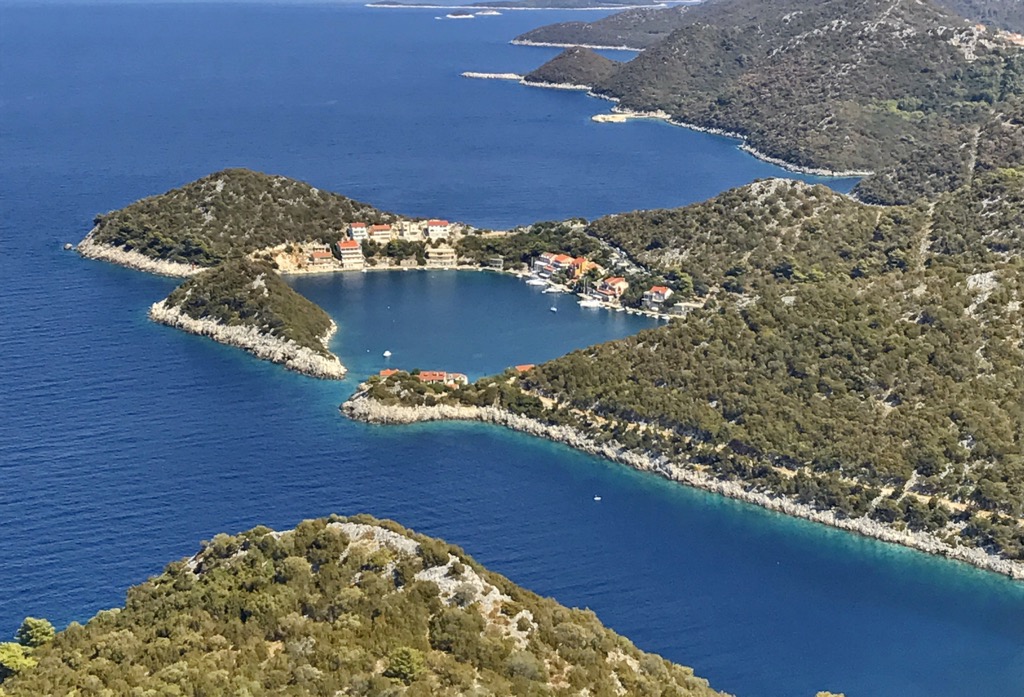
Beginning from Skrivena Luka (Portorus), a stunning bay on the island's southern side, this trail unveils breathtaking views. Various hills featuring lookout points encompass the route, which lies away from the coastline.
The trail passes Lastovo and the village of Ubli, located in the southwest part of the island. The 26 km (16 mi) loop is regarded as challenging and typically takes seven hours. Backpacking, birdwatching, and hiking enthusiasts frequent this route, though you can still expect plenty of tranquility.
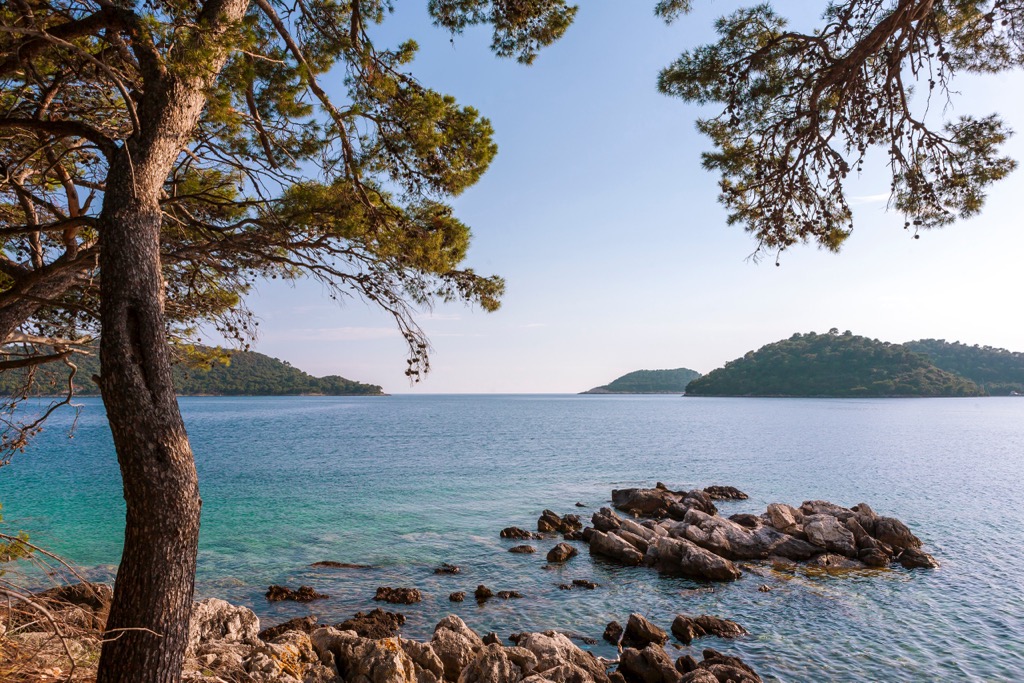
The most significant towns and cities near Lasovsko Otočje Nature Park include:
Dubrovnik is a captivating city on the southern coast of Croatia, known for its rich history and stunning architecture. Nestled between the Adriatic Sea and the Dinaric Alps, Dubrovnik offers a breathtaking backdrop for its visitors. With a population of around 42,000, it is one of Croatia's largest cities.
The Old Town is characterized by its medieval charm, encompassing ancient walls, narrow streets, and iconic landmarks. Dubrovnik provides various accommodation options to cater to diverse preferences and budgets. Visitors can explore the city's museums, art galleries, and theaters, immersing themselves in its rich cultural heritage. The city also hosts numerous annual festivals celebrating music, film, and local traditions.
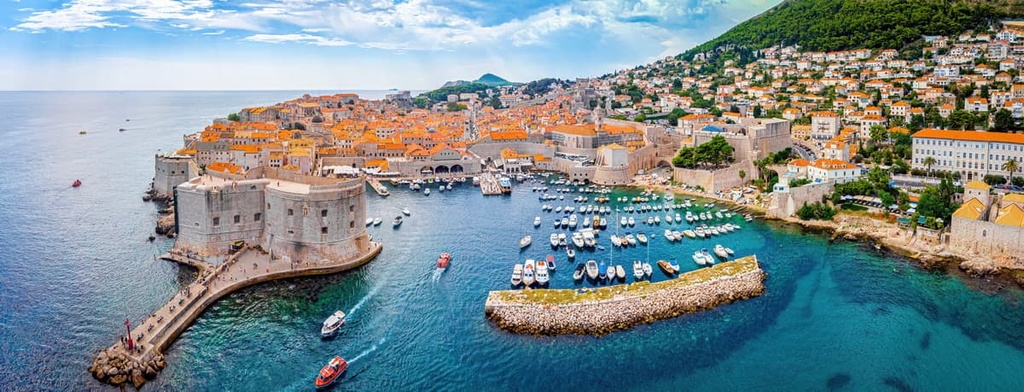
Makarska is a coastal city in southern Croatia known for its stunning natural beauty and vibrant atmosphere. Situated on the Adriatic Sea, Makarska offers a blend of crystal-clear waters, picturesque beaches, and majestic mountains.
With a population of 13,000, Makarska is a lively destination that attracts locals and tourists alike. The city boasts a charming historic center featuring a delightful combination of old stone buildings and modern amenities. Accommodations cater to a wide range of preferences and budgets. Whether you're seeking luxurious hotels, cozy guesthouses, or convenient apartments, you'll find suitable options to meet your needs.
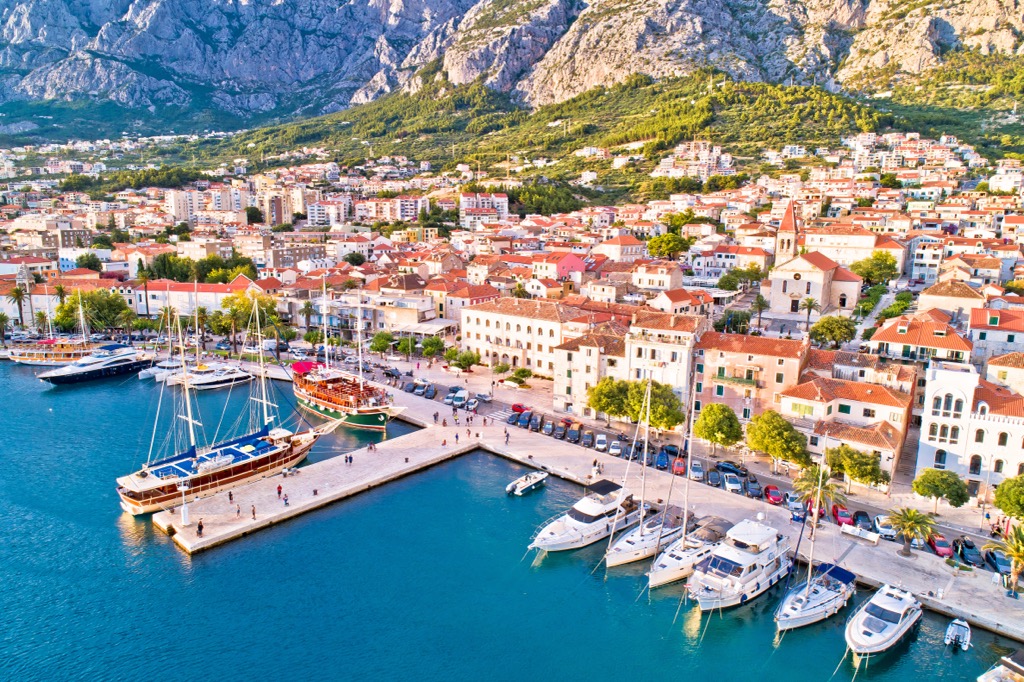
Ploče is a picturesque town on southern Croatia’s Adriatic coast. It features stunning beaches, crystal-clear waters, and a vibrant Mediterranean atmosphere. Ploče is in Dubrovnik-Neretva County and is an important transportation hub connecting the mainland with the nearby islands.
Ploče has a population of around 9,000 and offers a range of amenities and facilities for residents and visitors. It boasts a charming harbor area where you can find fishing boats and yachts, adding to the maritime charm of the town.
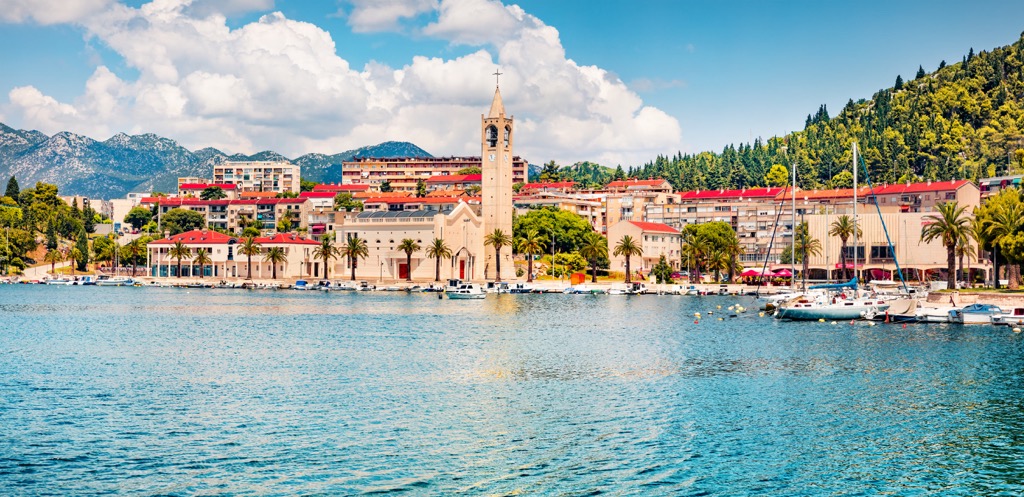
Explore Park prirode Lastovsko otočje with the PeakVisor 3D Map and identify its summits.








